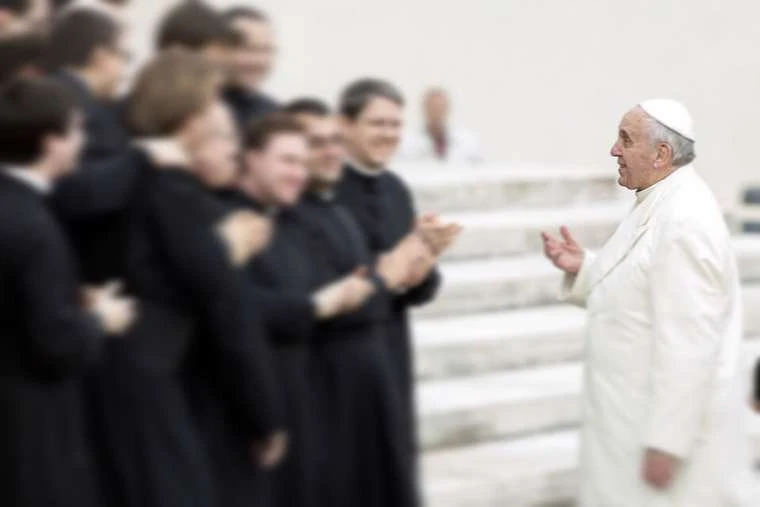
Vatican City, May 19, 2017 / 06:32 pm (CNA/EWTN News).- Pope Francis will deliver his fifth speech on the present and future of Europe during an event organized by the Commission of the European Bishops’ Conferences of the European community (COMECE).
The event, titled “Rethinking Europe,” has been organized by COMECE in collaboration with the Holy See, and will take place in Rome Oct. 27-29 to mark the 60th anniversary of the Treaties of Rome, which laid the foundation for the European Union.
Pope Francis was invited to the event during a private meeting he had with the COMECE standing committee on May 16. The meeting took place in the afternoon in Domus Sanctae Marthae, where Pope Francis lives.
The COMECE delegation is composed of president Cardinal Reinhard Marx and the four vice-presidents, bishops Jean Kockerols, Gianni Ambrosio, Czeslaw Kozon, Rimantas Normila. COMECE general secretary, Fr. Olivier Poquillon also attended the meeting.
The group also had meetings with Cardinal Pietro Parolin, Vatican Secretary of State, and with Archbishop Paul Richard Gallagher, the Vatican Minister of Foreign Affairs.
Cardinal Marx stressed in a press release that the “Rethinking Europe forum will be the start of a process of dialogue between the Churches representatives (both bishops and lay people) and the politicians who have political responsibility and make decisions.”
After the encounter with COMECE’s standing committee, Pope Francis met on May 18 with the new presidency of the Council of the European Bishops’ Conferences, known by the acronym CCEE.
While the COMECE is composed by bishops delegated by their Bishops’ Conferences to deal with institutions associated to the European Union, the CCEE is composed by the presidents of the Bishops Conferences in Europe, and deals with the pastoral challenges of each of the European countries represented.
Cardinal Angelo Bagnasco, current president of the Italian Bishops Conference, was elected President of the CCEE.
The Italian cardinal explained in a press conference that the topics discussed with Pope Francis included secularization, migration, youth and human trafficking.
When the conversation turned to the challenges of young people, “the Pope warned us about the demographic winter. He particularly recommended us to care for young people”.
Cardinal Bagnasco also underscored that “Pope Francis expressed gratitude and admiration for the work done by the Churches in Europe in order to tackle the migration issues.”
If you value the news and views Catholic World Report provides, please consider donating to support our efforts. Your contribution will help us continue to make CWR available to all readers worldwide for free, without a subscription. Thank you for your generosity!
Click here for more information on donating to CWR. Click here to sign up for our newsletter.




Leave a Reply